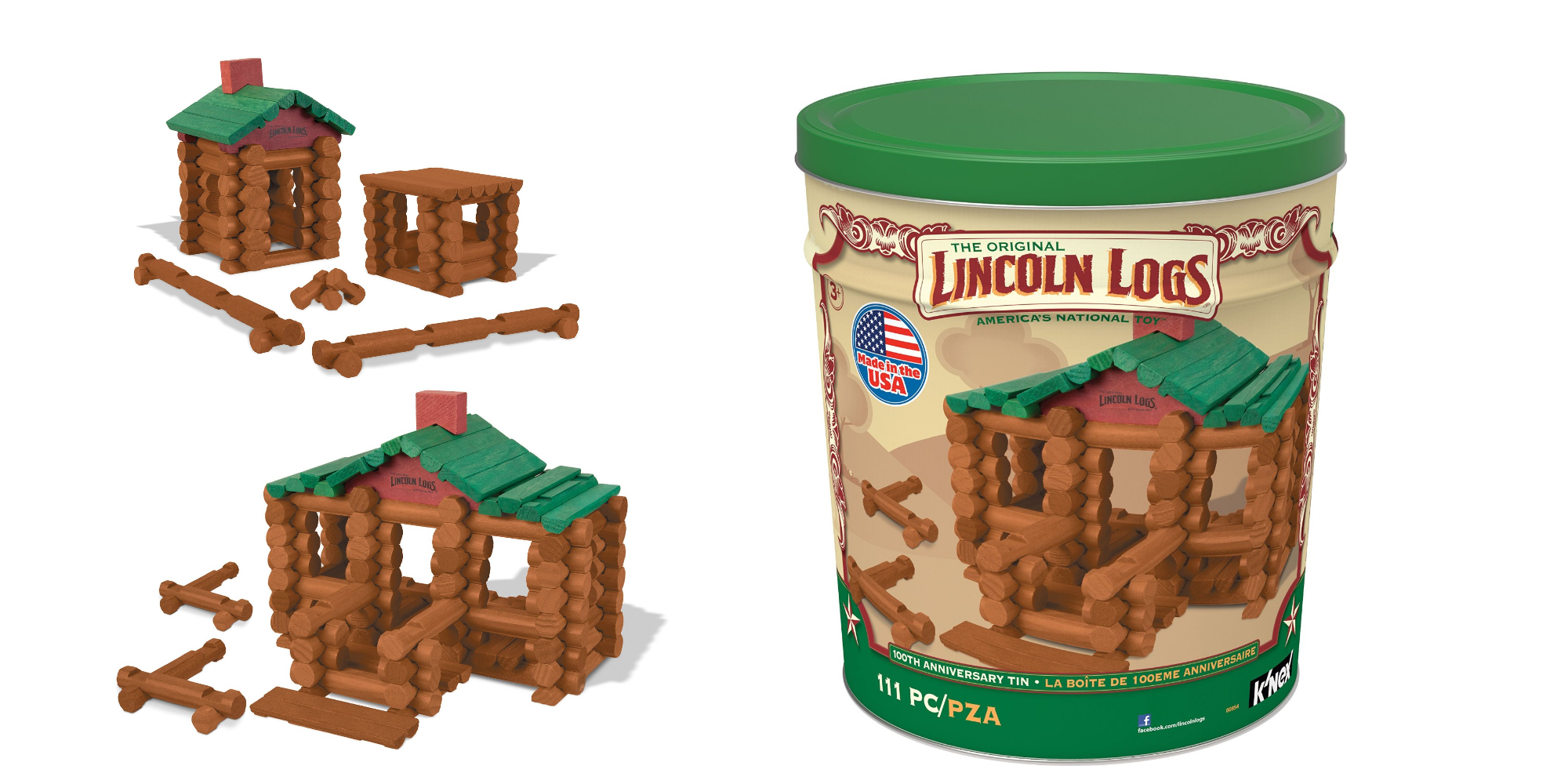

They come in 4 sizes: 1, 2, 3, and 4-notch, as shown in the image above, which give a surprising level of versatility to the number of designs that can be made, considering they only join at right angles. 2cm) in diameter, with 3/4″ square notches every 2 1/4″ along the length.

To look at, the logs are very simple, but the interlocking system is genius in its simplicity. After all, we live in a world surrounded by people!Īnd these are only some of the benefits! Lincoln Logs Design Collaboration – Ever had to build something with someone else? It can be frustrating at first as you work out the niggles between you, but learning to work with others is a skill that will pay dividends in the future.There have been some incredible structures made using these “children’s” toys. Creative Exploration – After getting to grips with the basics and making the suggested projects, children get to develop their own engineering-based creativity.The biggest benefit of failure is its counterpart: success! There is nothing to boost self-esteem like seeing the finished product of time and effort. Self-Confidence – Failure was mentioned earlier.It is one of the most versatile materials available and is sustainable to boot, and we can attest that the more you use it, the more you fall in love with it! Appreciation for Natural Materials – Call us biased, but we love wood.
#LINCOLN LOGS TRIAL#
Engineering – How do structures support each other? Why did that section collapse? Was the foundation sturdy enough? Once again, the trial and error of coming up against adversity and overcoming it fuels the physical learning process. In life, failure is absolutely and 100% guaranteed at some point or another, so learning to handle it well at a young age will benefit any person throughout their life. Perseverance – Talking of trial and error, having to face and overcome failure regularly is crucial to developing a healthy mindset. Cognitive – Planning and visualizing the completed process (even just one or two steps ahead) is a valuable skill that the process of trial and error hones. Fine motor – Arranging small components so they fit well takes some dexterity. Just some of the areas that using Lincoln Logs regularly exercises are: Mainly because we love log cabins, and Lincoln Logs make…well, log cabins.Īs is becoming more and more widely known, any toy that involves constructing something from smaller components is great for developing many important areas in young humans. It’s understood that stating the benefits of any STEAM toy (Science, Technology, Engineering, Arts, and Mathematics) is almost unnecessary, but we’re going to do it anyway! Image Credit: camknows | Flickr | No Changes Made In 1999, Lincoln Logs and John Lloyd Wright made their way into the National Toy Hall of Fame, amongst other classic toys such as LEGO, Etch A Sketch, Tinker Toy, and Marbles. Fortunately, that was short-lived and the toys returned to their previous wooden standard. In the ’70s there was a brief dalliance between the manufacturer and the plastic industry. The classic American children’s toy is still made from high-quality, polished maple wood today, but was originally made from redwood. Lincoln Logs were first made around 1916, over 100 years ago, by architect and toy inventor John Lloyd Wright, and have been a staple toy of the wood-loving world. These are just four of the words that describe Lincoln Logs, one of the oldest STEAM toys still around, and an excellent all-rounder for your child. The name John Wright chose for his construction set reflected the sentiments of the times, but Lincoln Logs have remained popular for 100 years.High-quality, sustainable, versatile, and durable. Abraham Lincoln, who was born in a simple log cabin and rose to be president of the United States, not only epitomized the virtues of the frontier but also proved that, uniquely, in America individuals of the humblest beginnings could achieve greatness. Americans had long associated the log cabin and frontier spirit with democratic principles, and they found progress in having tamed the wilderness and cultivated its lands. National parks preserved vast tracts of wilderness for Americans to visit and explore. At that time, the country adapted symbols of the wilderness and frontier into everyday life even as the frontier itself "closed." Children joined Boy Scouts and Camp Fire Girls to learn woodcrafts, natural history, and living in the wild. Lincoln Logs appeared in stores in 1920, just as Americans began to worry that urbanization and industrialization would harm the nation's character and values. John Wright claimed he got the idea for Lincoln Logs from the "floating cantilever construction" techniques his father developed for Tokyo's Imperial Hotel. Lloyd Wright, named his construction set after America's 16th president. Wright, son of the well-known 20th-century architect Frank.






 0 kommentar(er)
0 kommentar(er)
